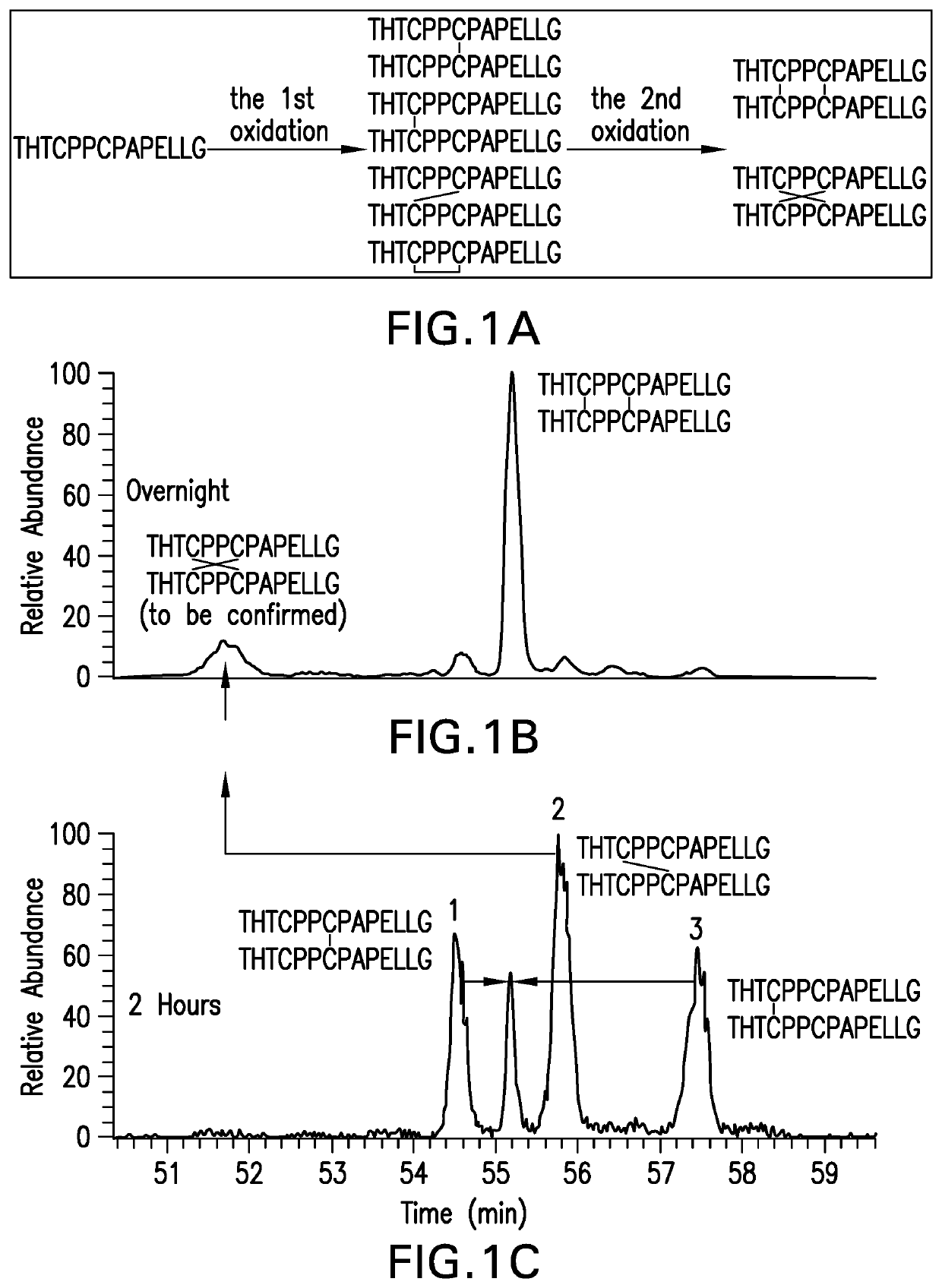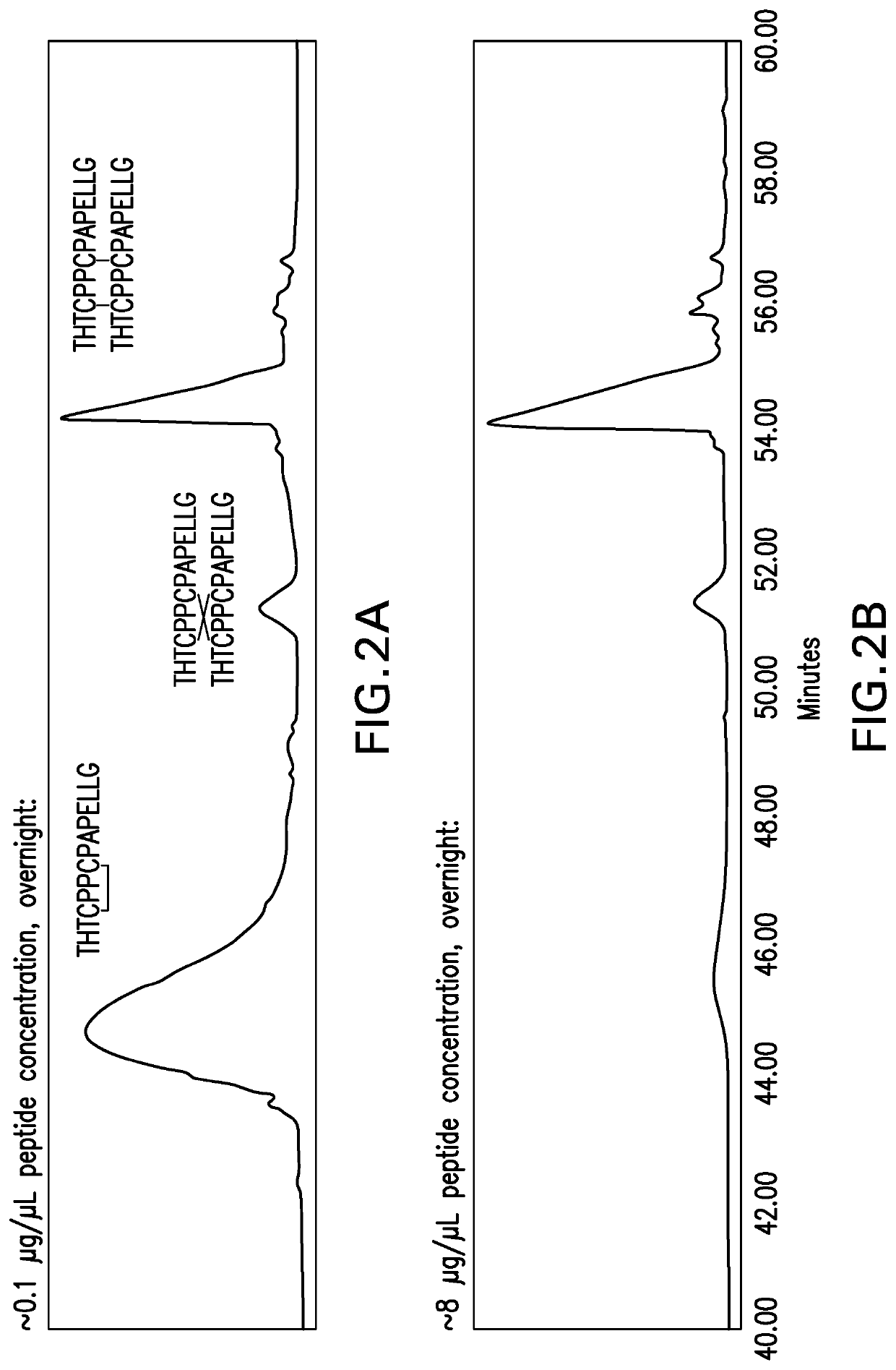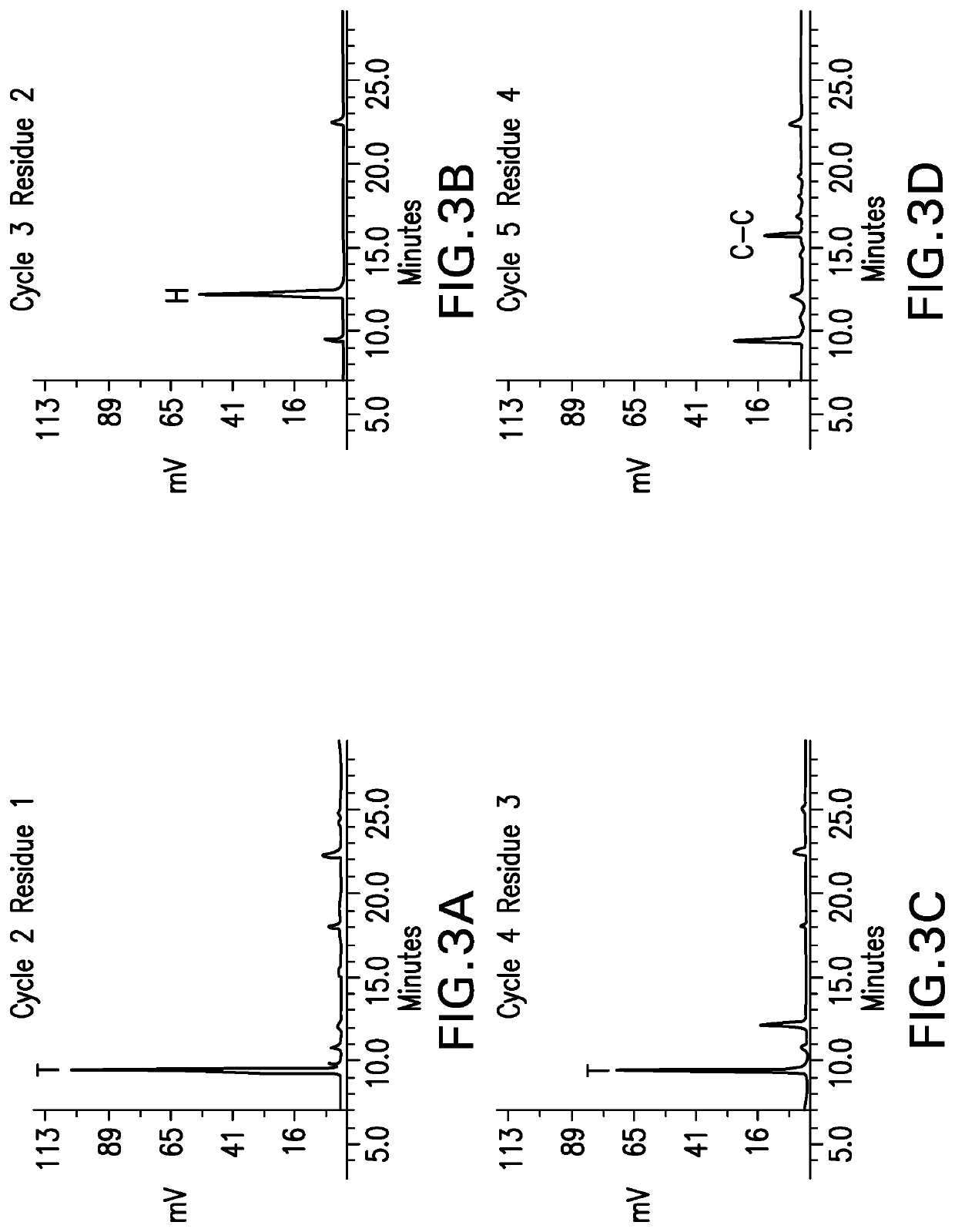Methods for characterizing disulfide bonds
a disulfide bond and disulfide bond technology, applied in the field of disulfide bonds, can solve the problems of poor shelf life or even immunogenicity of patients, post-translational modification, and other changes of antibodies, and achieve the effect of reducing the amount of cross-linked disulfide bonds
- Summary
- Abstract
- Description
- Claims
- Application Information
AI Technical Summary
Benefits of technology
Problems solved by technology
Method used
Image
Examples
example 1
of Parallel and Crossed Hinge Peptides
[0065]Methods:
[0066]Cross-Linking Cysteine containing peptides were purchased from a commercial vendor. The peptides were cross-linked by incubation with 1 mM Cu2+ as the oxidant in the presence of air. The molar ratio of peptide to Cu2+ was 5:1.
[0067]N-Terminal Analysis / Edman Degradation
[0068]The cross-linked peptides were suspended in water and were placed into a protein sequencer. The peptides were exposed to phenyl isothiocyanate (PITC). PITC couples with the N-terminal residue to form a PTC polypeptide. Trifluoroacetic acid was added to the reaction and the PTC N-terminal residue underwent acid cleavage, resulting in the release of an unstable ATZ-amino acid. The ATZ-amino acid was separated from the peptide solution into a conversion flask containing ethyl acetate. The ATZ-amino acid was converted into a stable PTH-amino acid with 25% TFA, v / v in water. The PTH-amino acid solution was injected onto an HPLC. Each amino acid of the peptide i...
example 2
of the Hinge Region of Two mAbs
[0072]Methods
Hinge DSB Characterization
[0073]Antibodies were first digested into peptides. IgG1 antibodies were subjected to dual-enzyme digestion using proteinase K followed by trypsin. IgG4 antibodies were subjected to digestion by FabRICATOR followed by trypsin. Hinge peptide standards were prepared as above, using the hinge region sequence of the IgG1 and IgG4 antibodies to prepare the peptides. The digested peptide mixtures were subjected to LC-MS analysis. Hinge peptide standards were also subjected to LC-MA analysis. Retention time analysis was performed to compare the retention time of the antibody peptides to the retention time of the hinge peptide standards.
[0074]Results
[0075]IgG1 mAb1 was subjected to digestion into peptides and the resulting peptides were subjected to LC / MS analysis. The hinge peptide standards described above were also subjected to LC / MS analysis. As shown in FIGS. 6A-6C, IgG1 mAb1 has about 0.9% crossed hinge disulfide bo...
PUM
| Property | Measurement | Unit |
|---|---|---|
| v/v | aaaaa | aaaaa |
| concentration | aaaaa | aaaaa |
| concentration | aaaaa | aaaaa |
Abstract
Description
Claims
Application Information
 Login to View More
Login to View More - R&D
- Intellectual Property
- Life Sciences
- Materials
- Tech Scout
- Unparalleled Data Quality
- Higher Quality Content
- 60% Fewer Hallucinations
Browse by: Latest US Patents, China's latest patents, Technical Efficacy Thesaurus, Application Domain, Technology Topic, Popular Technical Reports.
© 2025 PatSnap. All rights reserved.Legal|Privacy policy|Modern Slavery Act Transparency Statement|Sitemap|About US| Contact US: help@patsnap.com



